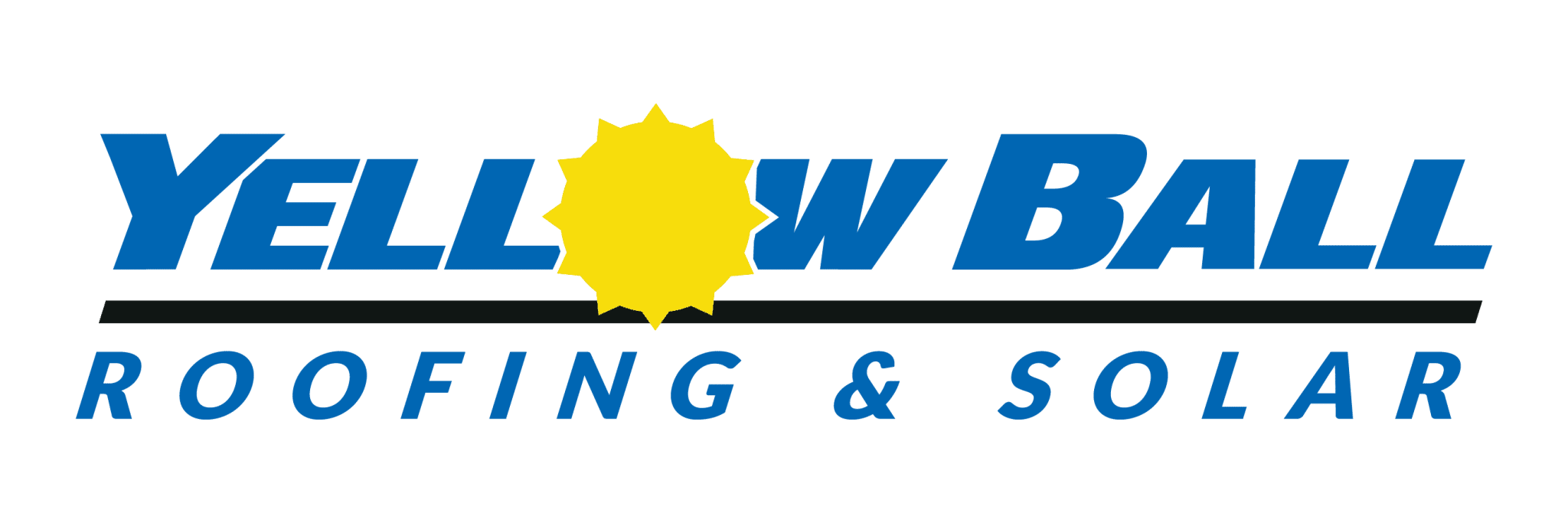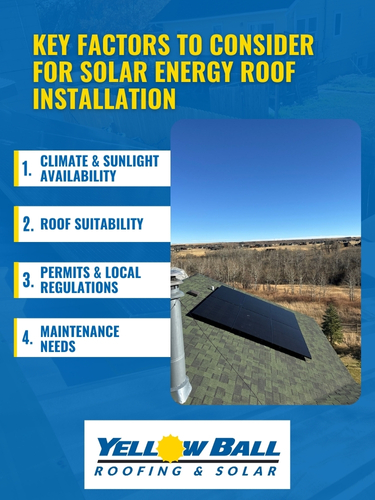Thinking about a solar energy roof? You’re not alone. More and more homeowners in Montana and Wyoming are exploring this sustainable energy option.
This guide covers solar energy roof systems, including costs, benefits, and factors to consider.
Solar roof options are gaining popularity as people seek ways to reduce their environmental impact and save money. But is it the solar power system for you?
Looking to boost your home’s energy efficiency and embrace sustainability?
Contact YellowBall Roofing & Solar today to start your journey toward a greener, more affordable future with the best solar installation services in Montana and Wyoming.
Solar Energy Roofs: A Closer Look
A solar energy roof incorporates photovoltaic (PV) cells directly into the roofing materials. This creates a seamless look while generating electricity from sunlight.
Types of Solar Energy Roofs
Solar energy roof systems come in two main types:
- Solar Roof Shingles: These resemble asphalt shingles but contain solar cells. They are installed like regular shingles for a sleek appearance. Each shingle’s power output varies from 13 to 80 watts.
- Solar Tiles: Larger than solar shingles, solar tiles are made of glass, metal, or concrete with integrated solar cells. They often mimic traditional roofing, offering design flexibility.
Breaking Down the Costs of a Solar Energy Roof
The price of a solar energy roof is crucial. While the solar roof produces energy, compare it to a traditional solar panel install.
Solar shingles cost between $21 and $25 per square foot ($2,100 to $2,600 per roofing square), with an average total cost of $55,000. Traditional solar panel systems average around $16,500.
Incentives, like the 30 percent tax credit from the Inflation Reduction Act for solar energy roof installation, can help.
Weighing the Pros and Cons of Solar Energy Roofs
Solar energy roofs offer benefits and drawbacks.
Advantages of Solar Energy Roofs
- Reduced Energy Bills: A solar energy roof can lower electricity costs, depending on factors like the number of tiles and energy consumption.
- Increased Home Value: Solar energy roofs are a valuable upgrade for potential buyers.
- Aesthetics: These roofs are a sleek alternative to traditional solar panels. The integrated solar products can better absorb sunlight.
- Durability: Many solar roof products have impressive wind ratings, like GAF’s system with a 200+ mph rating.
Disadvantages of Solar Energy Roofs
- Higher Upfront Cost: Solar roofs cost more than traditional solar panels.
- Complexity: Installation is more complex and requires special expertise.
- Limited Availability: Solar energy roofs may not be available in all areas. Finding residential solar in your area can be tough.
Key Factors to Consider for Solar Energy Roof Installation
Climate & Sunlight Availability
Montana and Wyoming’s sunny summers and cold winters make them ideal for solar energy, although snowfall can affect panels temporarily.
Systems designed with tilt adjustments can help with snow shedding to optimize performance in varying temperatures.
Roof Suitability
Solar systems work best on south-facing roofs, though east or west-facing roofs can also be effective.
A roof’s angle, type, and condition, especially for older roofs, should be evaluated for a roof replacement to ensure the solar setup will be effective and long-lasting.
Permits & Local Regulations
Homeowners should ensure compliance with local regulations, including HOA guidelines.
Additionally, staying informed on federal and state incentives like net metering and tax credits can help maximize savings.
Maintenance Needs
Low-maintenance designs, snow-shedding features, and annual inspections can keep panels performing well.
App-based monitoring allows for easy tracking of energy production, helping homeowners quickly identify any issues.
Is a Solar Energy Roof Right for You?
Choosing the right solar products involves several variables.
Consider these key questions:
| Factor | Description |
|---|---|
| Roof Suitability | Is your roof’s angle and orientation good for capturing sunlight? Does it need reinforcements for solar tiles? |
| Energy Needs | What is your household’s energy consumption? An energy audit can show areas for increased efficiency. |
| Budget | Can you afford a solar energy roof? Have you thought about the potential long-term financial gains? Research potential incentives and rebates at DSIRE. |
| Aesthetics | Is visual integration important? Consider that integrated systems offer less placement flexibility. |
| Local Regulations and Incentives | Research local building codes and permits, plus state and local incentives. The DSIRE database can help find local rebates. |
Switching to renewable energy sources, like solar shingles, has many benefits. For example, a Tesla solar roof can add significant value to a home.
For an expert solar installation and consultation for your solar needs, contact YellowBall Roofing & Solar today!
Solar Energy Roof Installation Process
Consultation & Assessment
Many providers offer free assessments, evaluating roof suitability, energy needs, and shading.
Homeowners are also encouraged to explore financing options and incentives to reduce costs.
Installation Timeline
Managing the permitting process keeps installation timelines predictable. Installation generally takes 1-3 days, during which the panels are secured, the system is connected, and utility inspections for grid connection are completed.
Post-Installation
Once connected to the grid, systems undergo performance tests to ensure optimal function. App-based monitoring is set up, allowing homeowners to track energy output and savings.
Warranties for panels and inverters provide peace of mind, along with tips for low-maintenance upkeep in snowy climates.
FAQs about Solar Energy Roof
Are solar roofs worth it?
A solar energy roof’s value depends on individual circumstances. Consider your roof’s suitability, energy needs, budget, and preferences.
How much do solar roofs cost?
Solar roofs cost more than traditional systems. Shingles average $55,000, while panels average $16,500.
Can a Solar Roof power a house?
A solar energy roof can power a house, depending on factors like roof size, angle, location, and energy consumption.
What is the downside of rooftop solar?
Rooftop solar’s main drawbacks are high initial costs, complex installation, and limited availability.
Is a Solar Roof Right for You? Decide with Confidence
A solar energy roof combines energy generation with roofing.
By examining the pros, cons, and your financial situation, you can determine if a solar energy roof or solar installation is right for you.
Evaluate roof suitability, energy consumption, and personal preferences.
Consider other solar products or postpone your decision until technology advances or incentives improve.
A solar energy roof offers potential; carefully weigh all aspects before installing solar.
Ready to make your home more sustainable? Trust YellowBall Roofing & Solar for expert solar installations across Montana and Wyoming.
Start saving on energy while making a positive impact—contact YellowBall Roofing & Solar today to power your home the green way!





